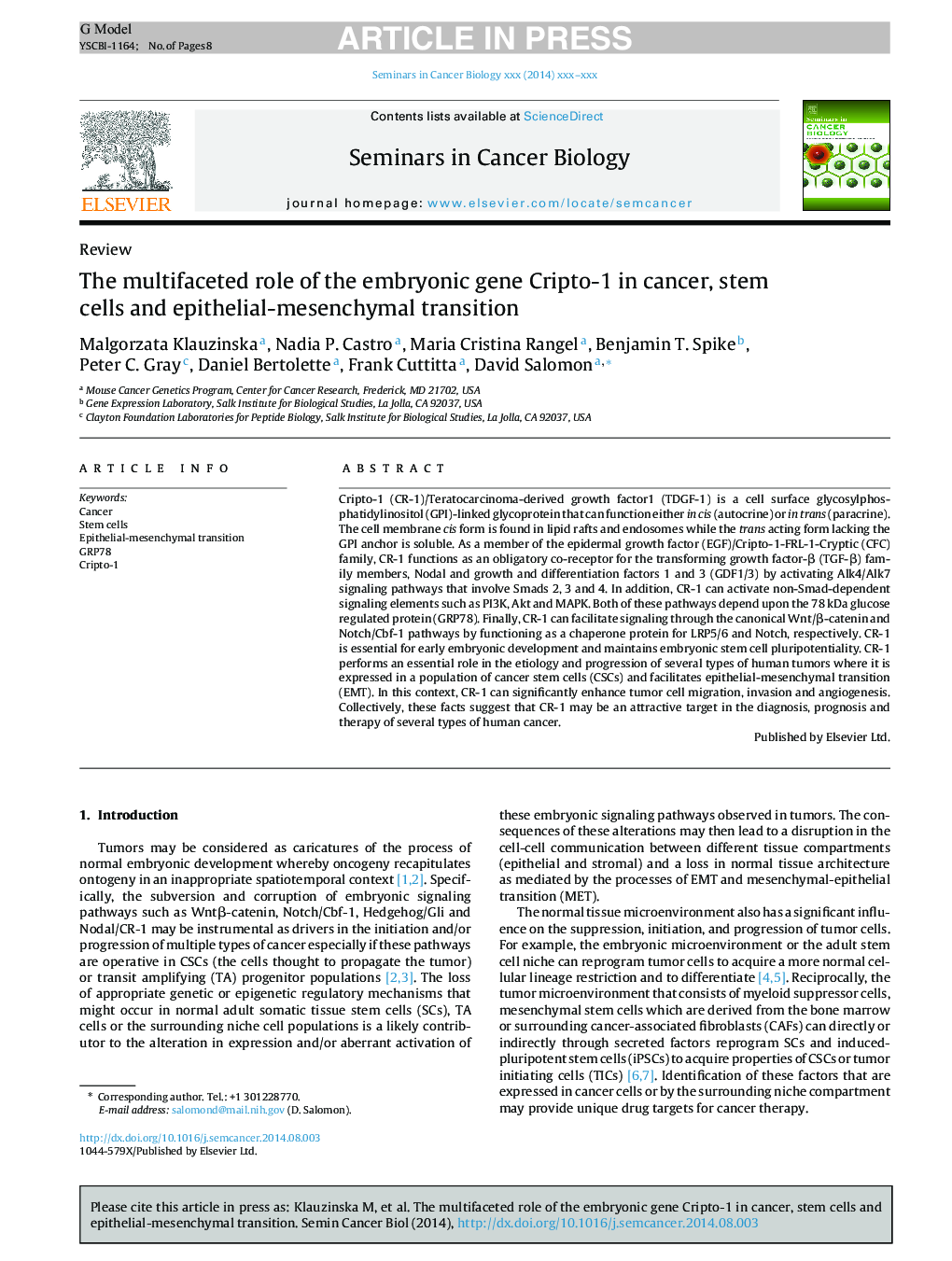| Article ID | Journal | Published Year | Pages | File Type |
|---|---|---|---|---|
| 8362326 | Seminars in Cancer Biology | 2014 | 8 Pages |
Abstract
Cripto-1 (CR-1)/Teratocarcinoma-derived growth factor1 (TDGF-1) is a cell surface glycosylphosphatidylinositol (GPI)-linked glycoprotein that can function either in cis (autocrine) or in trans (paracrine). The cell membrane cis form is found in lipid rafts and endosomes while the trans acting form lacking the GPI anchor is soluble. As a member of the epidermal growth factor (EGF)/Cripto-1-FRL-1-Cryptic (CFC) family, CR-1 functions as an obligatory co-receptor for the transforming growth factor-β (TGF-β) family members, Nodal and growth and differentiation factors 1 and 3 (GDF1/3) by activating Alk4/Alk7 signaling pathways that involve Smads 2, 3 and 4. In addition, CR-1 can activate non-Smad-dependent signaling elements such as PI3K, Akt and MAPK. Both of these pathways depend upon the 78 kDa glucose regulated protein (GRP78). Finally, CR-1 can facilitate signaling through the canonical Wnt/β-catenin and Notch/Cbf-1 pathways by functioning as a chaperone protein for LRP5/6 and Notch, respectively. CR-1 is essential for early embryonic development and maintains embryonic stem cell pluripotentiality. CR-1 performs an essential role in the etiology and progression of several types of human tumors where it is expressed in a population of cancer stem cells (CSCs) and facilitates epithelial-mesenchymal transition (EMT). In this context, CR-1 can significantly enhance tumor cell migration, invasion and angiogenesis. Collectively, these facts suggest that CR-1 may be an attractive target in the diagnosis, prognosis and therapy of several types of human cancer.
Related Topics
Life Sciences
Biochemistry, Genetics and Molecular Biology
Biochemistry
Authors
Malgorzata Klauzinska, Nadia P. Castro, Maria Cristina Rangel, Benjamin T. Spike, Peter C. Gray, Daniel Bertolette, Frank Cuttitta, David Salomon,
